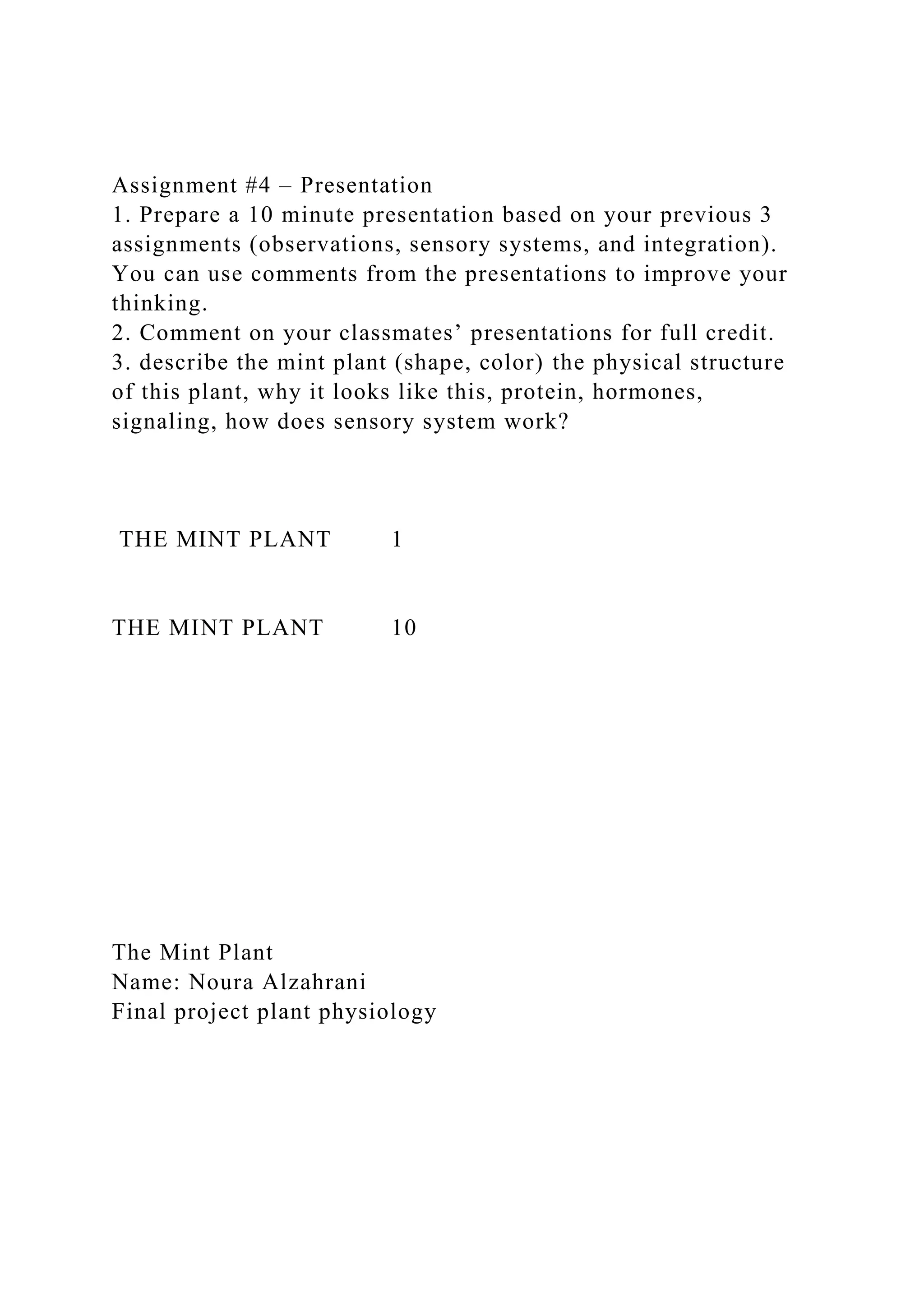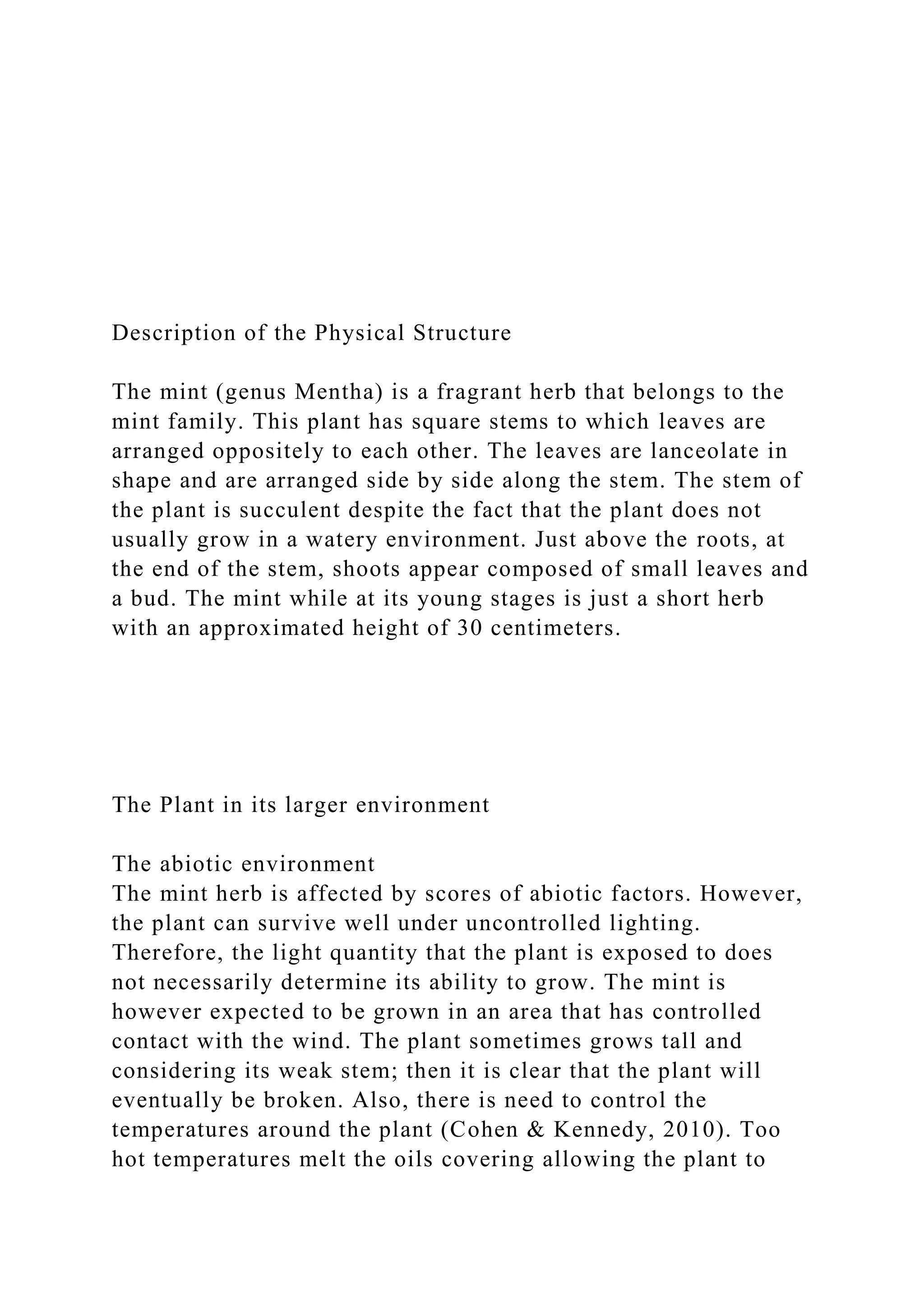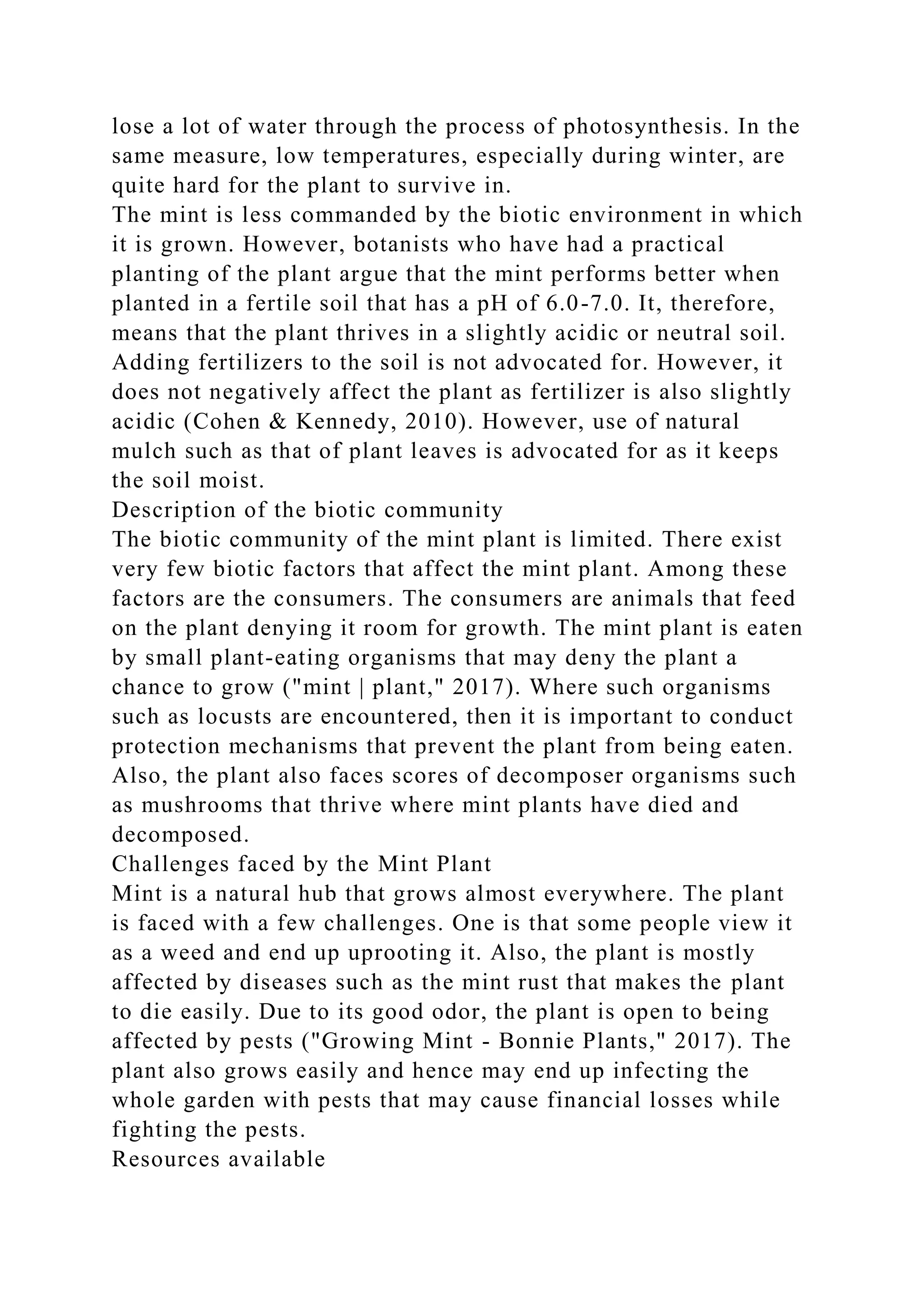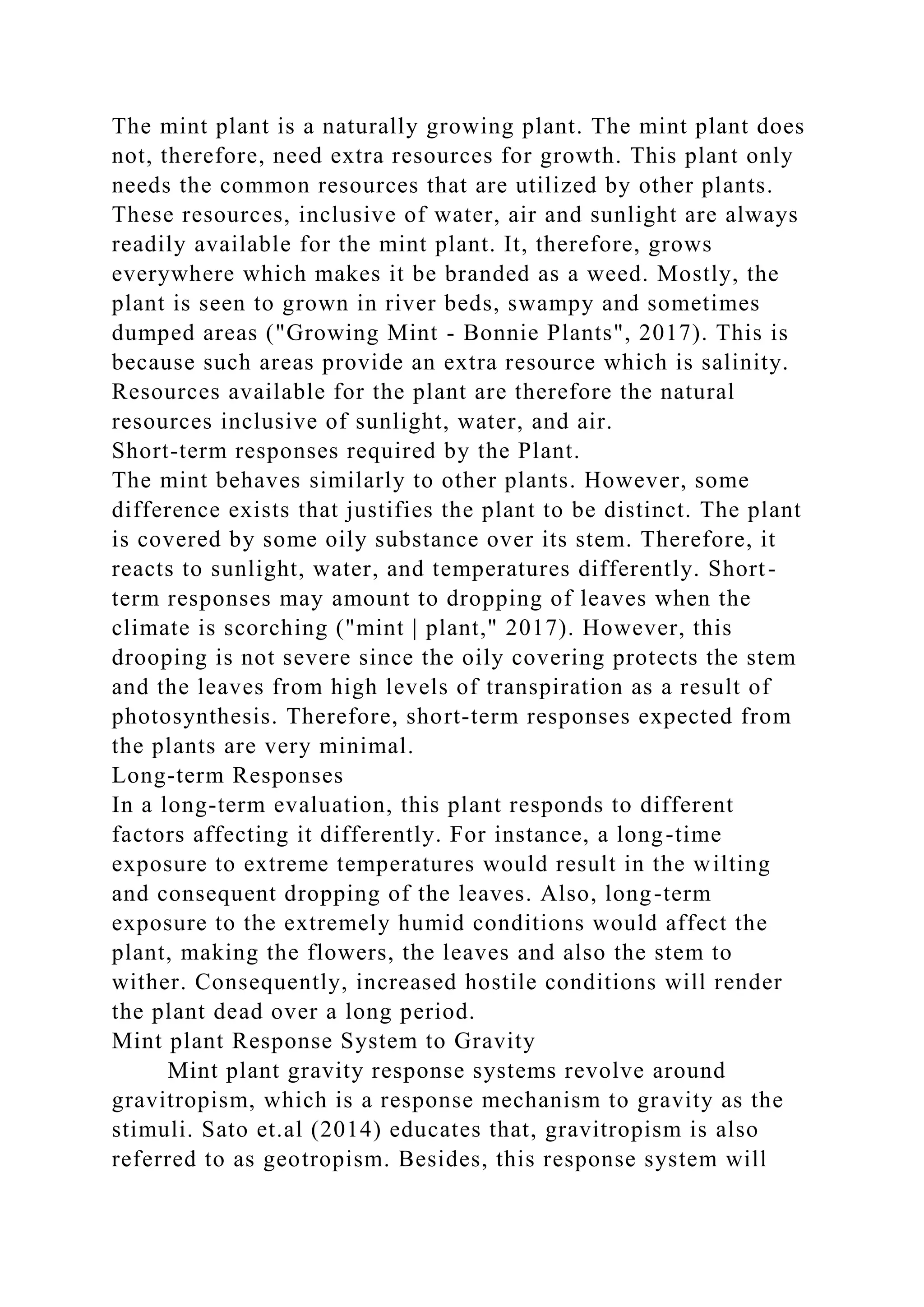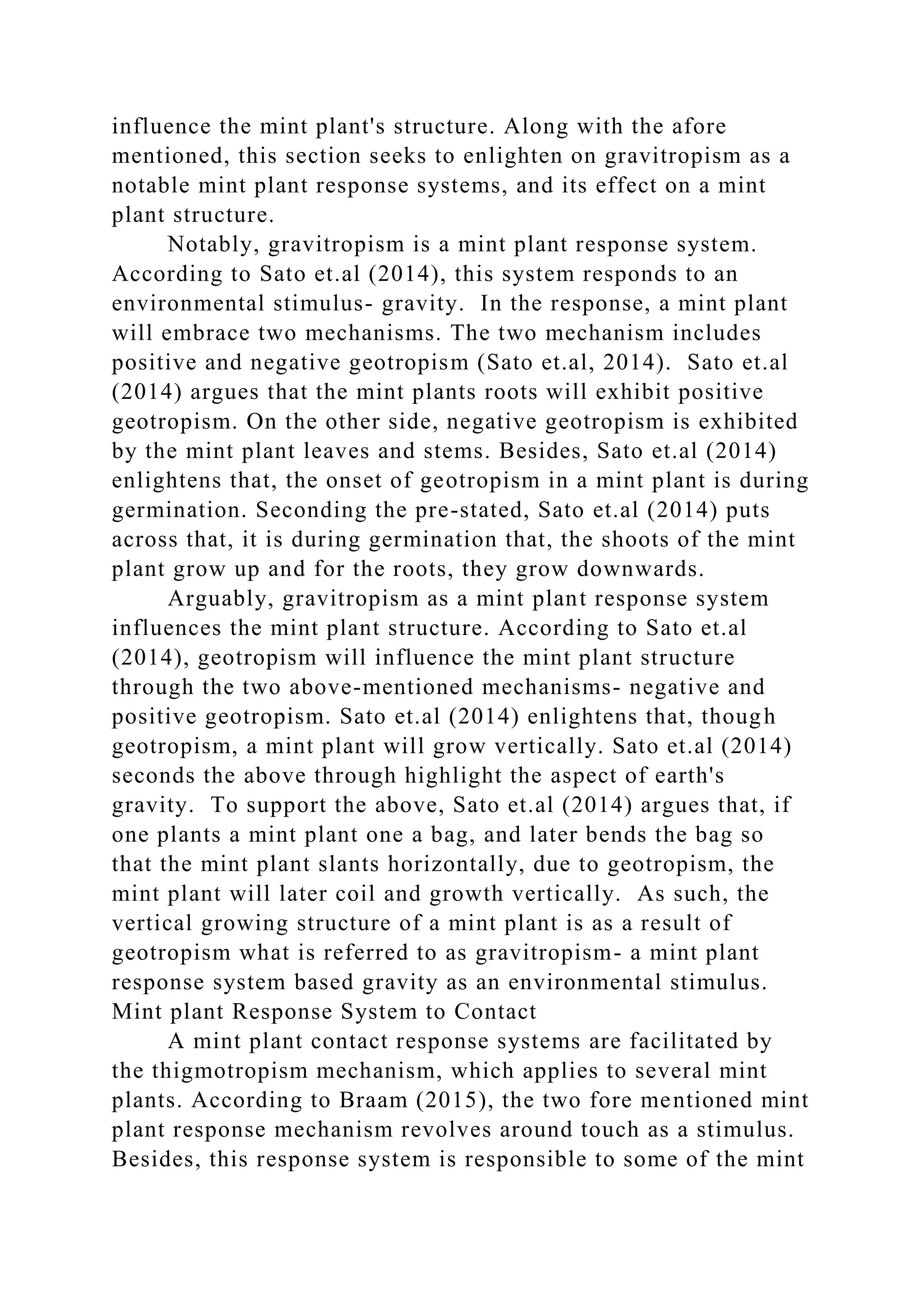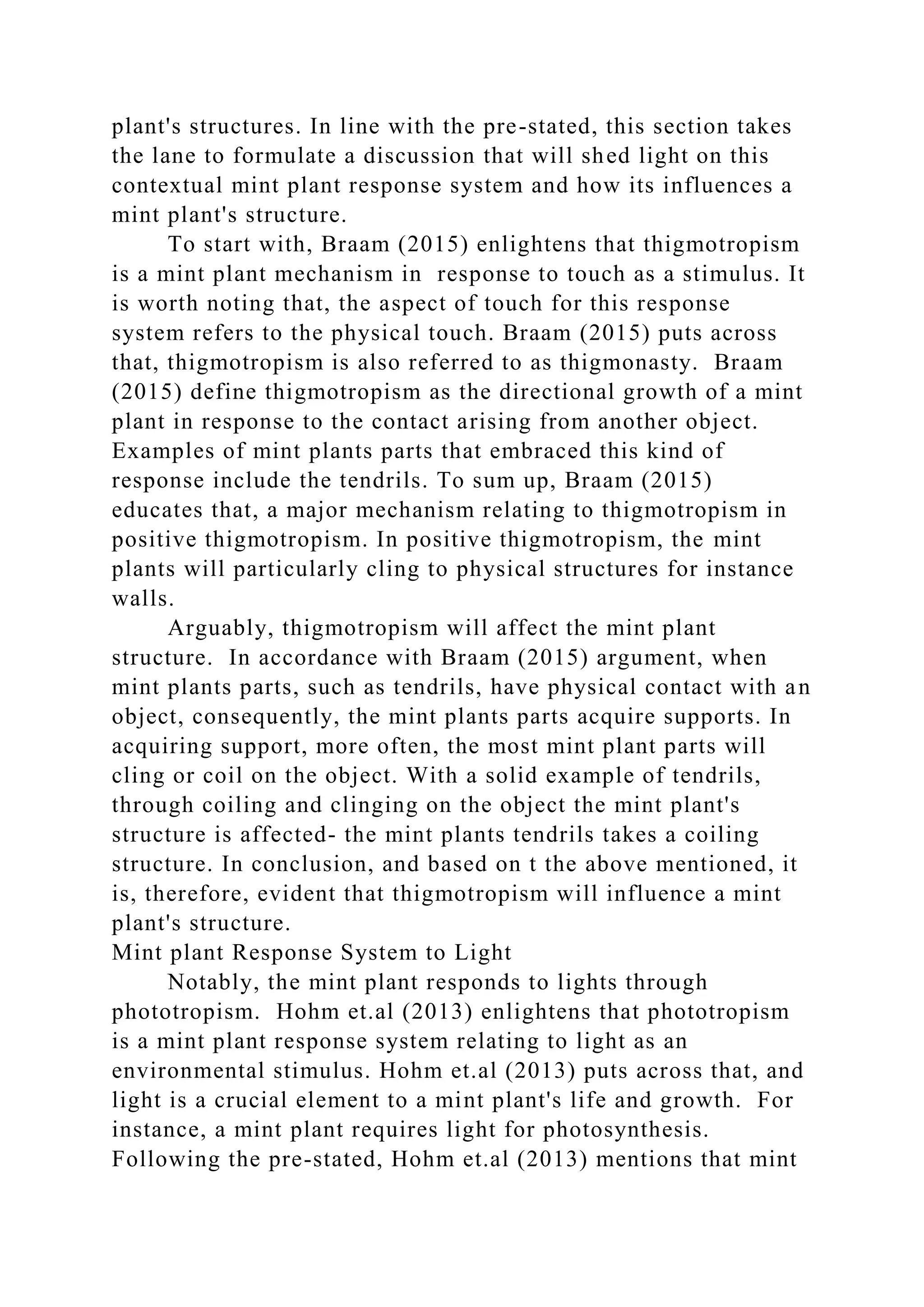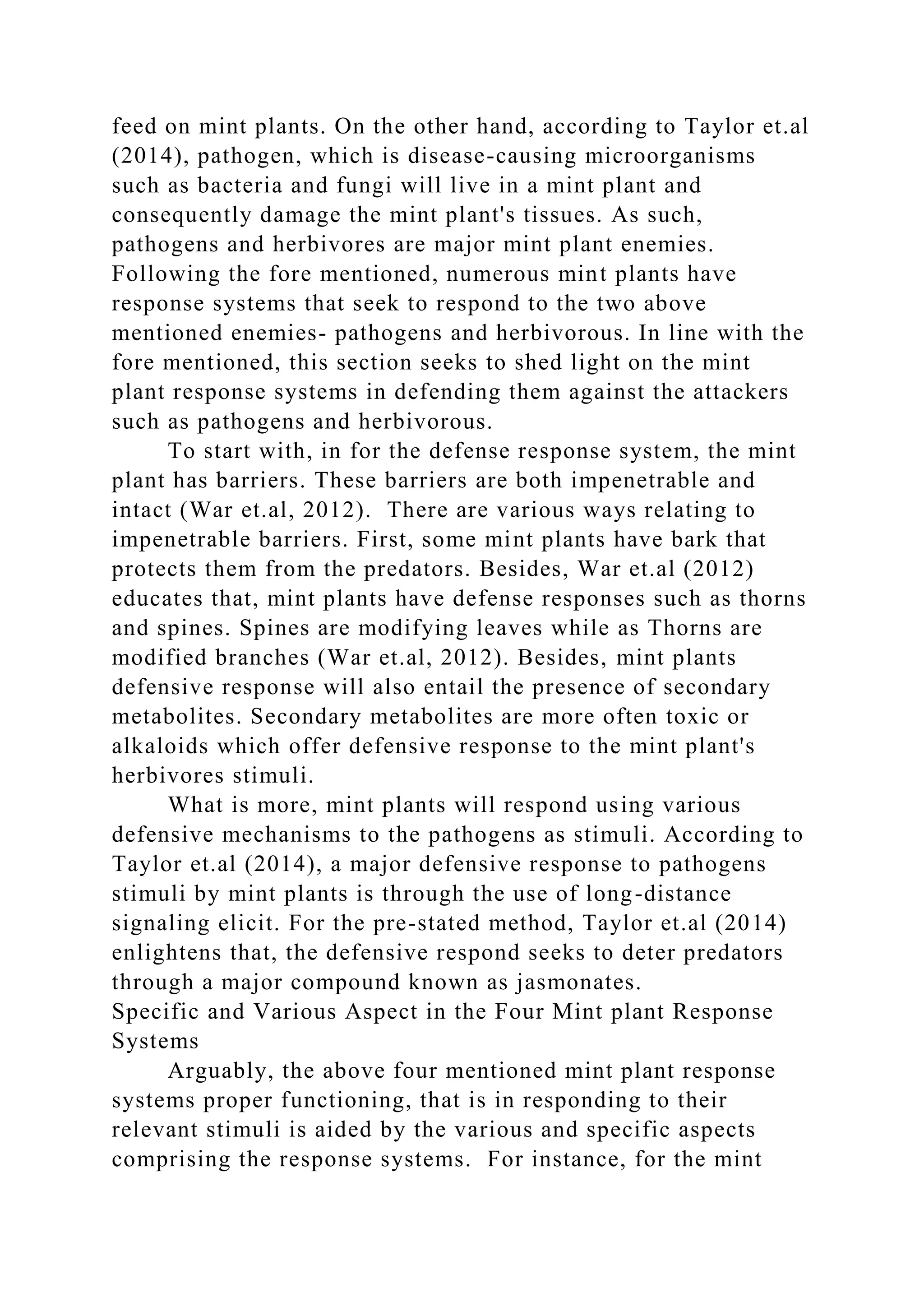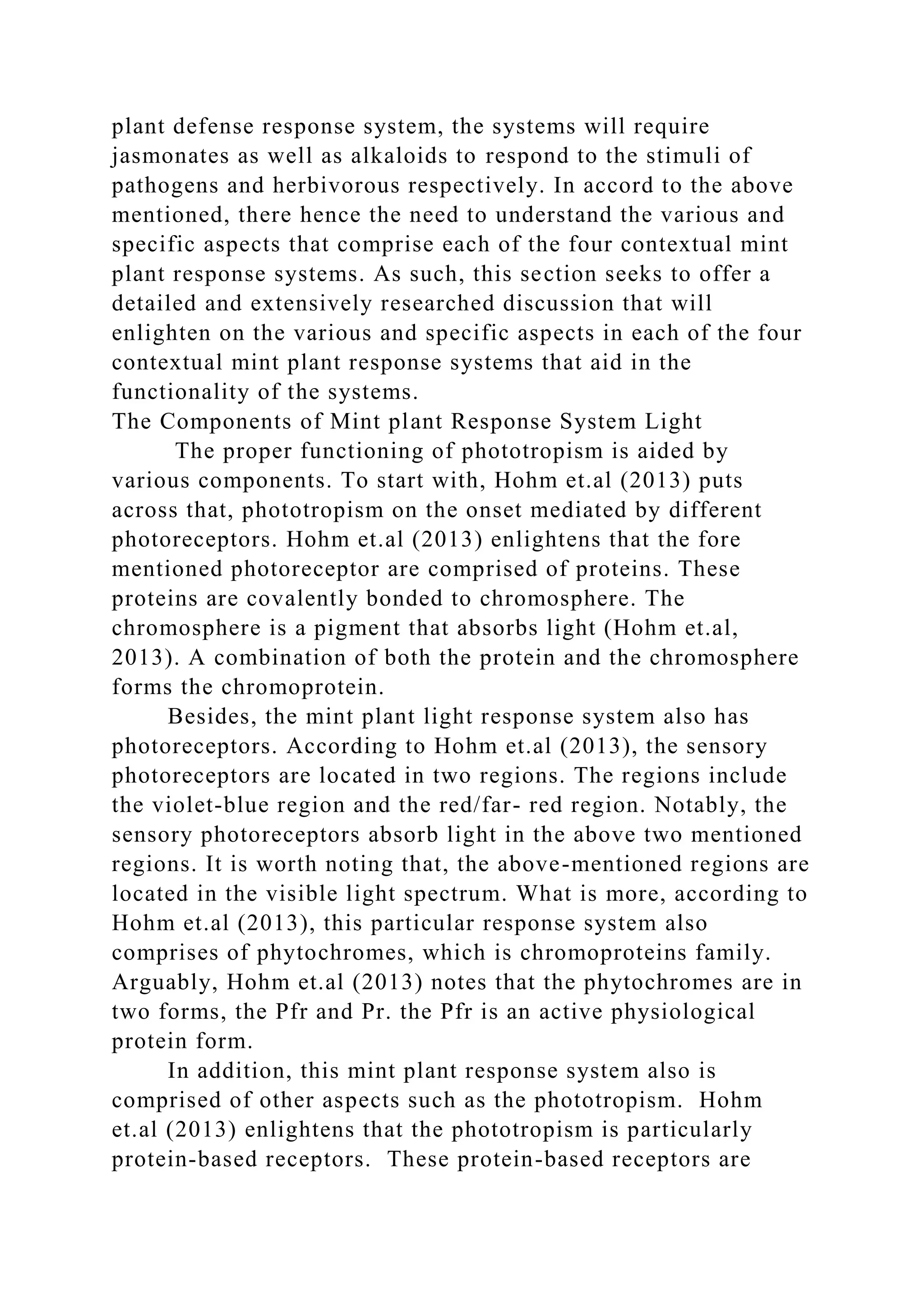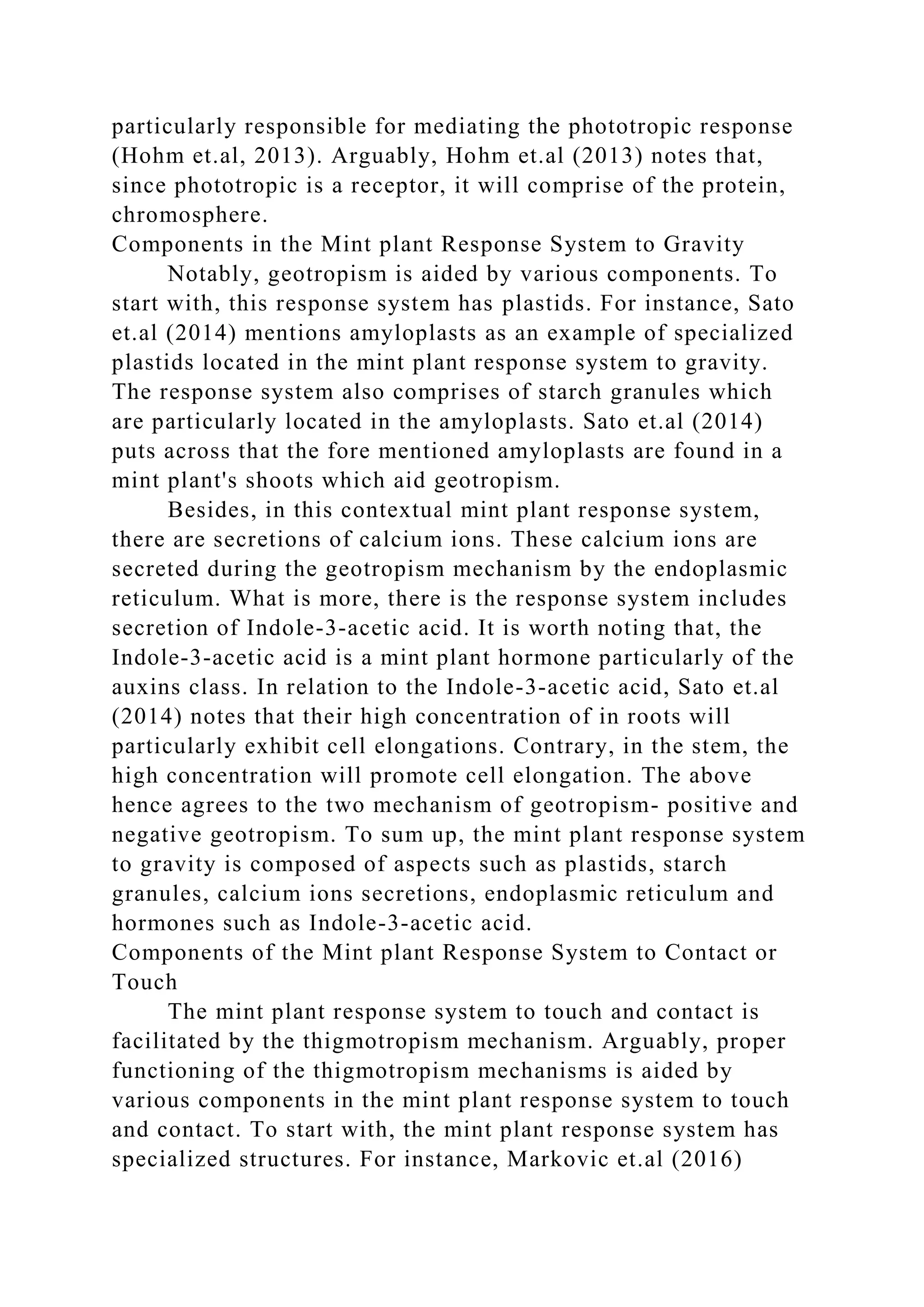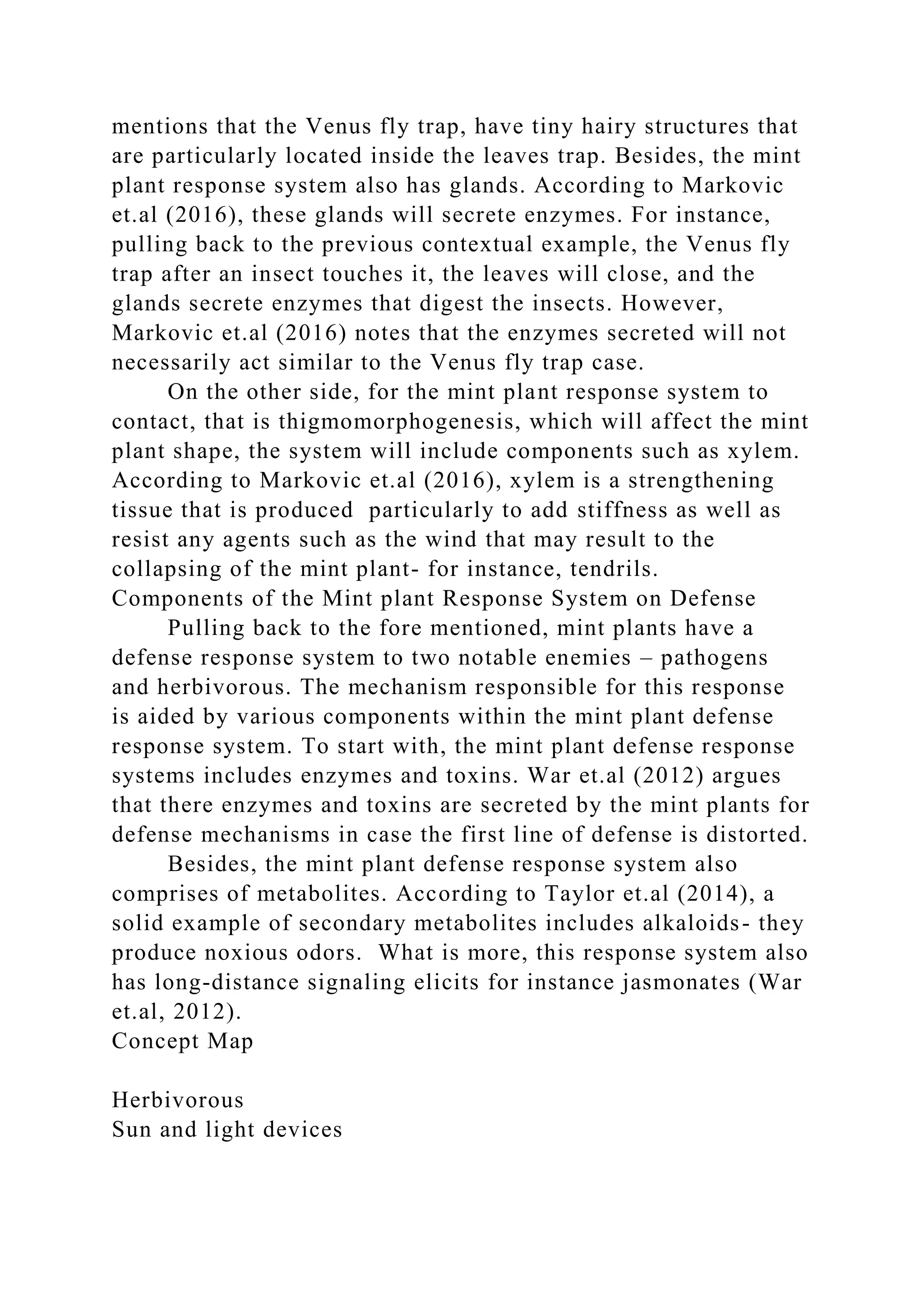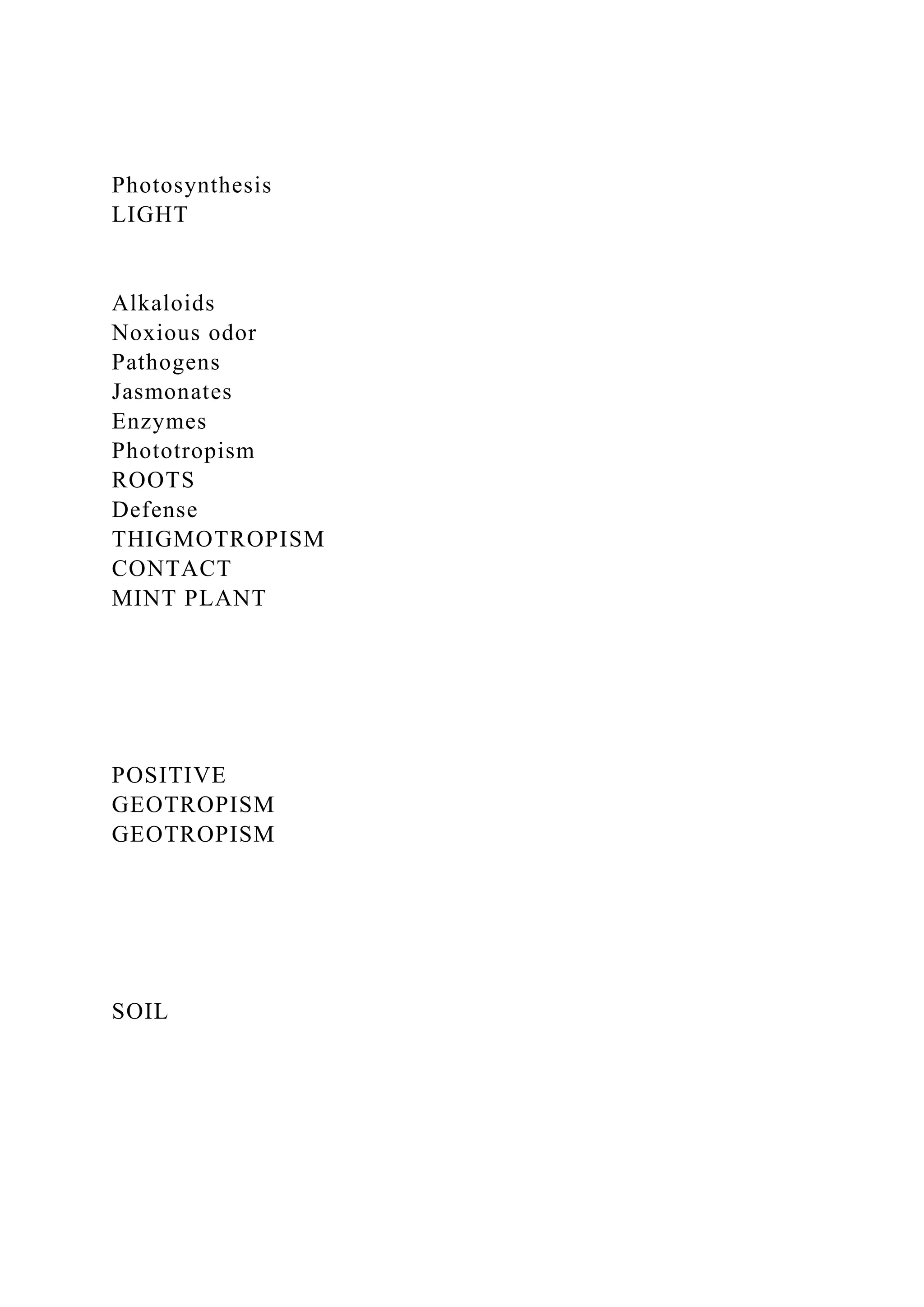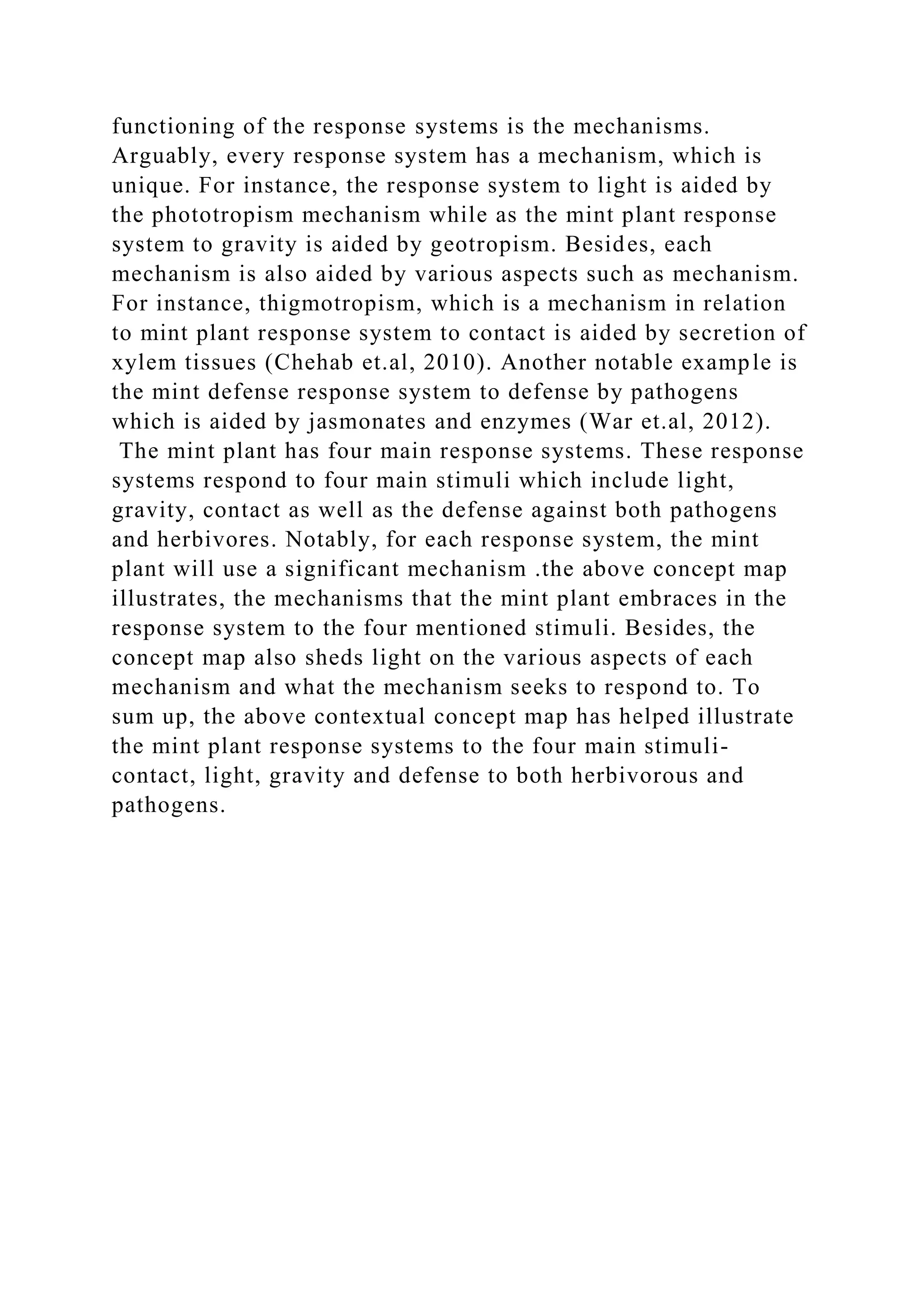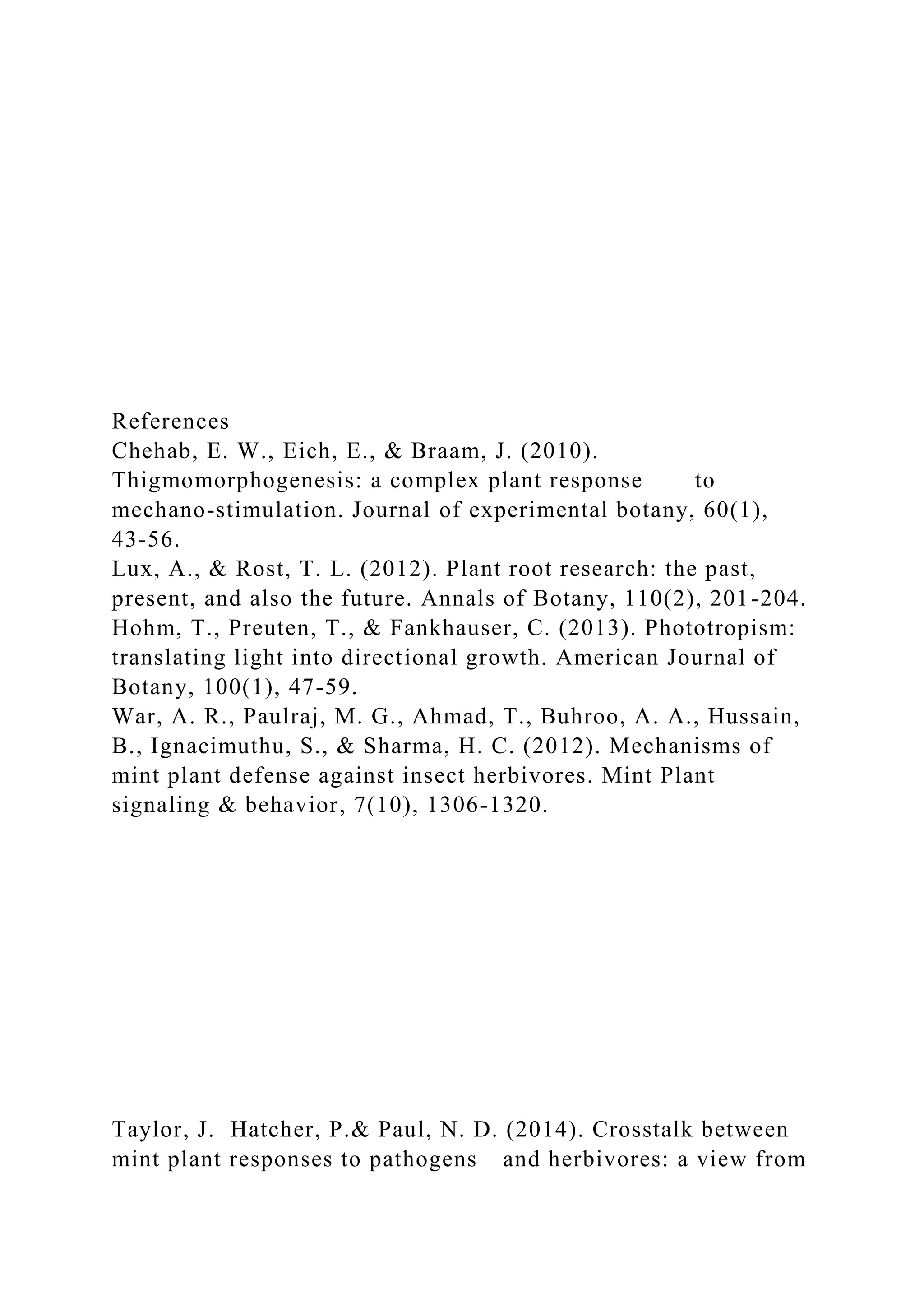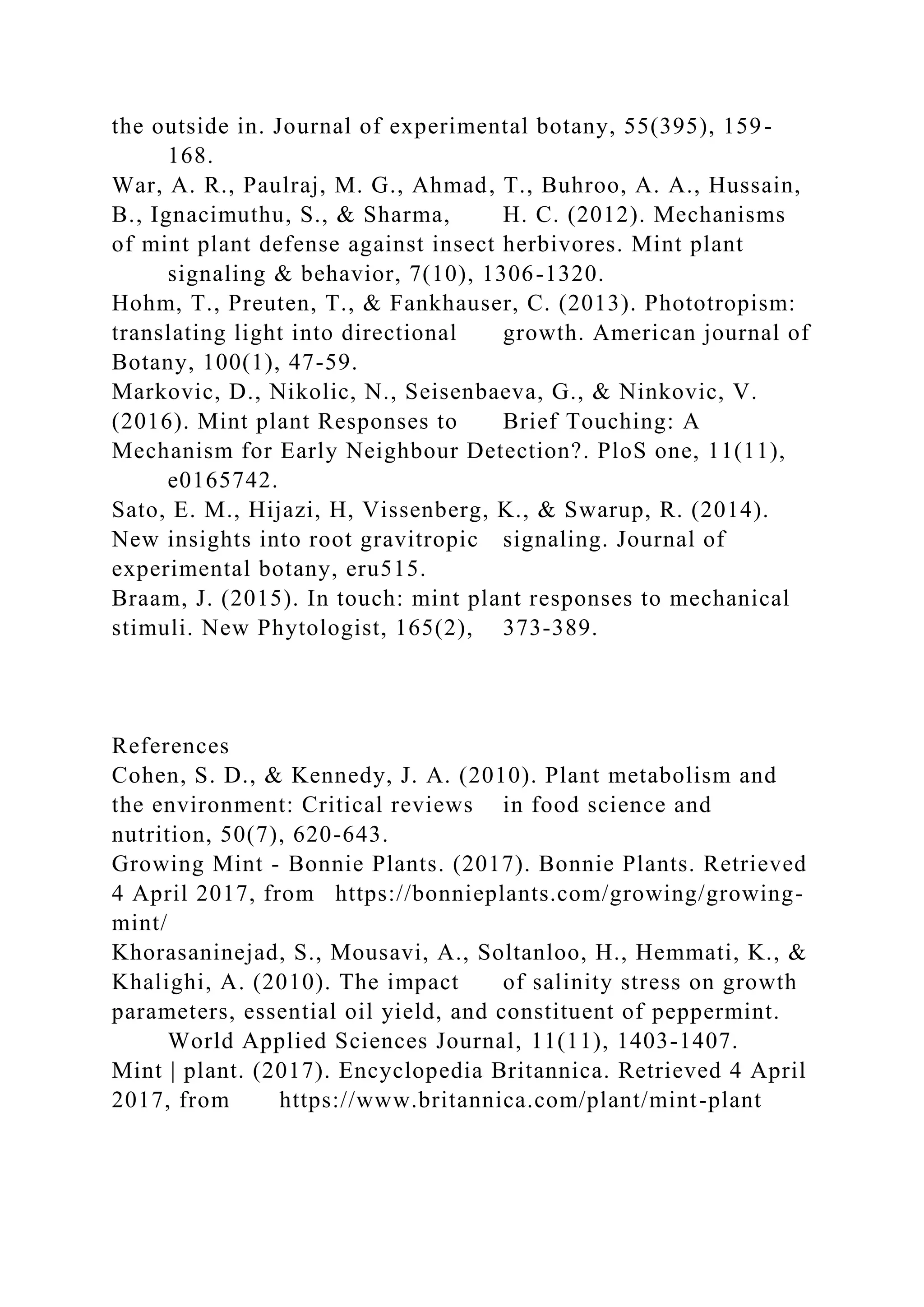The document outlines Assignment #4, which requires a 10-minute presentation on the mint plant, touching on aspects such as its physical structure, environmental factors, responses to stimuli like gravity, light, and touch, and various defense mechanisms against herbivores and pathogens. It describes the mint plant's traits, such as its square stems and lanceolate leaves, along with the abiotic and biotic factors that influence its growth. Additionally, it emphasizes the importance of understanding specific response systems like gravitropism, thigmotropism, and phototropism in relation to the plant's development and defense strategies.
